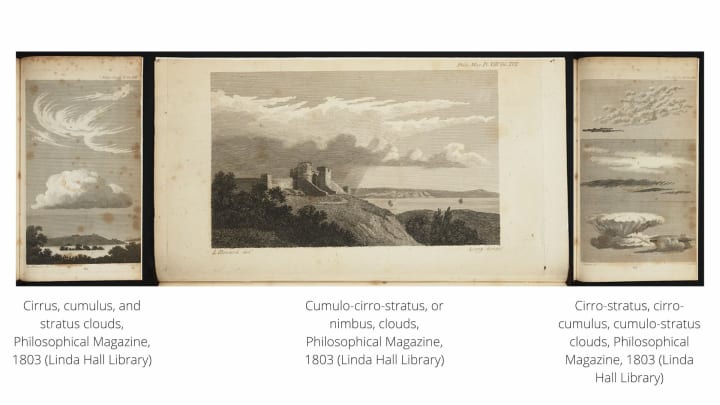10 Cloud Types and How To Recognize Them
It Is Interesting To Know About Clouds and Its Types

Sky. It is a magical feeling when we think of that word. Every evening I see magic in the sky with my husband; it's mind-blowing.
After 5.30 pm, I see many colors in clouds such as orange, blue, purple, pink, red, gold, and many, which even paint companies can't create.
Yes, clouds enjoy the sunset. Birds too cheering with clouds. We thought many clouds perform a dancing show to show the sun while the sun is set down. Or are they saying see you tomorrow? Fabulous evening appearing and hiding. Magic never-ending.
It is a special gift to all creatures. I see clouds moving fast slower, white, black, colorful. Do you know!
My husband and I every day see different shapes of them. He and I see the same cloud in various forms, from ginger to lion, horse, face, volcano. etc., it's expanding. No end card for clouds formation.
Didn't you see yet?. Then go and spend time to experience the show.
Luke Howard's love towards clouds
A man like us lived during 1772–1864. His name is Luke Howard. Initially, he was a chemist, as his father was a pharmaceutical chemical businessman. Later, he turned to a meteorologist by his interest and became the father of meteorology [Source].
When we travel or study anywhere, a window seat is almost all of us favorite. Howard also liked the same even at his young age to observe the fantastic sky.
Then he started following the clouds. As per my knowledge, clouds result from the condensed vapor of the atmosphere and make rains. But, cloud patterns cannot be easily understood. We need different ways of thinking. Luke Howard had that skill and analyzed more and more.
I thought of it as temporary shapes and no similarities in the clouds before this study. But Luke Howard did not feel like that; he found something unique and explored it more.
He said that the clouds are subject to distinct modifications created by general factors influencing all atmosphere changes. He compared it with our body as follows ; the facial indications are a state of a person's mind and body; likewise, clouds patterns show the atmosphere's state. How interesting his identification.
He also said that although clouds are in the same modification, they have common resemblances among trees, hills, or lakes.
Recognition of the types of Clouds and names by Luke Howard
He proposed naming the cloud and its classification in 1802. He published and presented a note, 'Modification of Clouds' to the Askesian Society. The third edition of that precious note is available in Google through these links [source1, source2].
He named the clouds in Latin language, by their shapes and believed that all cloud shapes belong to three principal types. They were as follows.
He describes it as "parallel, flexuous, or diverging fibres, extensible in any or all directions."
He describes it as "convex or conical heaps, increasing upward from a horizontal base."
He describes it as "a widely extended, continuous, horizontal sheet, increasing from below."
We know clouds won't be in a fixed shape as it spreading, merging, rising, and falling. Any name sets had to accommodate this continuous instability, as Howard realized.
Considering the regular transition of clouds that Howard introduced, intermediate compound cloud types. Howard then combined these names to form four more cloud types. They are,
He describes it as "small, well-defined roundish masses, in close horizontal arrangement."
He describes it as "horizontal or slightly inclined masses, attenuated towards a part or whole of their circumference, bent downward, or undulated, separate, or in groups consisting of small clouds having these characters."
He describes it as "the cirrostratus blended with the cumulus, and either appearing intermixed with the heaps of the latter or super-adding a widespread structure to its base."
He describes it as "the rain cloud. A cloud, or system of clouds from which rain is falling. It is a horizontal sheet, above which the cirrus spreads, while the cumulus enters it laterally and from beneath".

The cloud types are further extended as follows per the references I mentioned at last.
- 8. Alto-stratus: A combination of Stratus and Cirro-stratus
- 9. Alto-cumulus: Extended version of Cumulus
- 10. Cumulo-nimbus: A combination of Cumulus and Nimbus (Cumulo-cirro-stratus)

Cloud is too an object that cannot escape from the laws of physics.
Howard's classification had an immediate international impact. Many poets during his time wrote numerous poems honoring his cloud classification. The German poet and scientist J.W. van Gerta wrote a series of poems regarding this.
Howard thought it was easy to understand the invisible atmospheric processes through the apparent cloud's sign when they were named and classified. Initially, a small irregular spot appears. Then, the lower surface continues unevenly plane, and the upper surface rises into conical or hemispherical heaps. After that, it grows like a mountain.
Hence, he realized that they are subject to the same laws of physics as everything else on the earth. Some clouds slightly falling, and some are going upward with the effect of the sun and its heat.
Update yourself for the latest, but don't forget where it comes from
Nowadays, we quickly get to know climate forecasts using meteorological apps on our smartphones. But our grandparents used to predict climate change using cloud patterns, color, and wind speed. Luke Howard, too, recognized cloud types in their direction with extra enthusiasm.
Now, we slowly forgetting the basics and falling into technological illusion. Watching the cloud pattern, we can't precisely predict the climate nowadays. But it is helpful to understand.
Though you are using technologies to predict climate, study the basics and let the next generation knows it as well.
Thank you for reading!
I've included the references in the article itself. Also, I would like to share some more useful references I came across. They are, Science Museum, Rmets online library, Meterologiaenred, Brain pickings, A Journal.






Comments
There are no comments for this story
Be the first to respond and start the conversation.